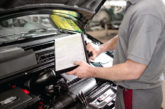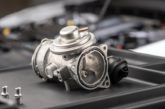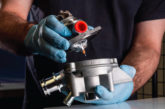
As the discussions for Euro 7 get underway, new methods to tackle emissions are being proposed in Brussels. But, the introduction of on-board monitoring may raise more questions for the aftermarket than it answers, as Neil Pattemore explains.
Those of us of a ‘certain age’ will remember the introduction of electronic fuel injection, and correspondingly, the start of electronic system monitoring for system diagnostics. The Ford ‘star tester’ would provide a series of flashing ‘stars’ that were then counted to interpret the possible fault – heady stuff at the time, but not when compared to today’s sophisticated vehicle diagnostics!
As exhaust emissions became an important environmental issue, there was initial pressure to both monitor the correct functioning of the engine management system and to report the details. To make this possible for roadside checks, standardised ‘on-board diagnostics’ were developed together with a standardised connector – the OBD emissions DTCs and metadata. These could be accessed with a scan tool using standardised communication protocols, via the 16-pin OBD plug.
However, times have moved on, and there is currently a significant discussion in Brussels concerning both the next level of exhaust emissions (Euro 7) – planned to be part of the vehicle type approval legislation by 2025 – and how the new vehicles will be monitored to test their in-service exhaust emissions levels.
This is part of this year’s plan for the Commission, and to support the investigation an advisory group for vehicle emissions standards (AGVES) has been formed, to investigate how this may be achieved and create a detailed proposal for possible future legislation.
In particular, this consortium will look at international emission regulations, the effectiveness of current European emission standards, and the development of an array of new test procedures. Propositions also include moving to emission limits based on the weight of the vehicle, and to include both hybrid and fully electric vehicles as part of the testing.
The current debate
The ultimate objective is to have post-Euro 6 type approval, which should be able to guarantee that a vehicle is as clean as possible under all driving conditions. It should also guarantee that the vehicle achieves zero or near zero emissions throughout its entire life, especially in urban areas – this would be achieved through a combination of real driving emissions (RDE) and on-board monitoring.
This would ensure more realistic assessments of emissions to ensure type approval compliance and would avoid any further ‘diesel gate’ scandals.
So far, so good, but within these proposals, there are some worrying aspects that could impact the aftermarket. On-board monitoring (OBM) would mandate more sensors on the vehicle, which would be monitored whenever the engine is running and report any rise in emissions. Think of this as an enhanced emissions OBD that is more focused on the actual emissions rather than the engine management components.
The question is: Who sets the thresholds and who can then access this data? Should a limit be exceeded? It will be more than just a simple trigger of a malfunction indicator light, as this information is of direct interest to not only the vehicle driver, but also to vehicle manufacturers, governments, and roadworthiness test authorities. Today, EOBD data is both standardised and accessible via a standardised connector (the 16-pin OBD plug). However, in this new proposal the OBD connector would no longer be fitted.
The current suggestion is that the emissions related data would be accessed in the cloud, but how all other in-vehicle data would be accessed is not specified. This generates the questions of who, how and when can in-vehicle data (including the emissions data) be accessed? The current proposal is for the vehicle manufacturer to transmit the OBM data from the vehicle to the cloud, but this still does not answer who would get access, especially if the emission threshold limits are exceeded.
A game changer
There could be a change in paradigm for the aftermarket as a result of this OBM proposal; not only will there also be On Board Fuel Consumption Monitoring (OBFCM), but the vehicle will be monitored remotely each time it is driven.
This brings in the threat of predictive repairs; the vehicle manufacturer can propose a replacement part before the ‘failure’ occurs directly to the vehicle owner via the in-vehicle display. Additionally, if a failure does occur, the display could ‘guide’ the driver to a workshop or test centre chosen by the vehicle manufacturer. The pass/fail criteria will also be triggered in the vehicle, as opposed to being checked in a MOT station when the vehicle is presented for testing. I am sure that you can see the developing threat from this seemingly innocuous proposal.
It is therefore critically important that the European Commission clearly defines the OBM, not just in terms of data, but also in terms of the standard access to the vehicle data. It’s also imperative that it includes the option of independent third-party testing, to provide ‘checks and balances’; this will reinforce and ensure proper monitoring and sensor function/calibration for the emission checks. Today, exhaust emissions are checked as part of the MOT test, and this needs to continue. This should become part of what is currently being standardised as ‘e-PTI’ (electronic periodic technical inspection), not only for the electronically controlled vehicle safety-relevant systems, but also for checking the on-board emissions monitoring.
The debate also includes the monitoring of other exhaust pollutants, especially NOx (nitrogen oxides) and PN23 (23nm particulates). Particulate number measurement will be introduced in Belgium, the Netherlands and Germany in the near future, and is aimed at identifying DPF removal during the roadworthiness test. At the UNECE level – which sets vehicle type approval requirements – the EMPIR project is discussing the wider introduction of PN measurement.
It is important that the legislator considers using internationally recognised standards (e.g. OIML, as used today for 4 gas analysers) for PN measurement. This would establish a trusted reference so that independent third parties can test OBM and OBFCM related on-board measurement systems – an excellent way to avoid another ‘diesel gate’, and provide the aftermarket with a breath of fresh air!









